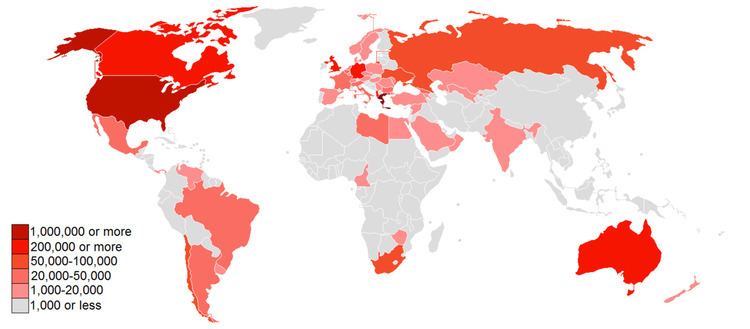 | ||
The Greek community in Ethiopia today numbers about 500 persons and can be traced back to the 18th century. It is mainly located in the capital, Addis Ababa, and the city of Dire Dawa.
Contents
History
The name Ethiopia itself is Greek and means "of burned face". It is first attested in the Homeric epics but it is unlikely to have referred to any particular nation, but rather, to people of Sub-Saharan African descent in general. The Greek community in Ethiopia is first attested by the presence of craftsmen and sailors in the 18th century (1740) in what was then Abyssinia, who played a part in the commerce between the country and Europe. The explorer James Bruce reported that a number of Greek refugees from Smyrna arrived in Gondar during the reign of the Emperor Iyasu II, who included twelve silversmiths, whom the emperor put to work producing a variety of items for both his court and the churches of Gondar.
The community saw its heyday in the early part of the 20th century with the establishment of the Holy Metropolis of Axum by the Patriarchate of Alexandria in 1908 and of the Greek organizations in Addis Ababa (1918) and Dire Dawa (1921).
Present Situation
In the post-war period the community grew to 3,000 persons. It suffered during the revolution that overthrew Haile Selassie in 1974, when the hostility of the Derg towards all foreign communities drastically reduced its size to the current population of about 500.
Today there is still a Greek school located in the capital as well as a Greek Orthodox church in the same city (St. Froumendios). The school has about 120 students, many of whom receive scholarships to continue their studies in Greece. However there is an increasing initiative by Greeks to take advantage of the investment opportunities currently available in Ethiopia.
